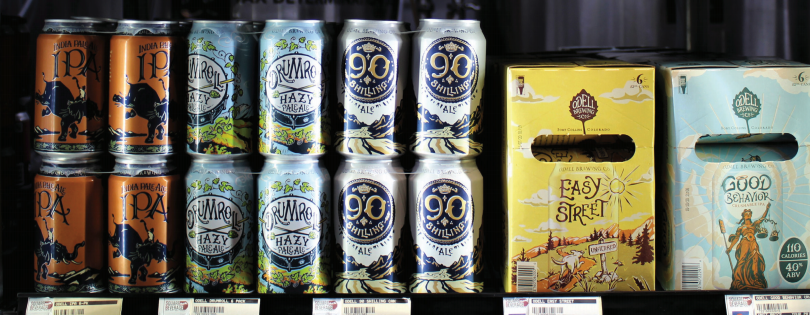
A new report from an interdisciplinary group of researchers at Colorado State University spotlights how the state’s craft breweries adapted to the introduction of full-strength beer into Colorado grocery and convenience stores in 2019. The report, “Beer Sales in Grocery and Convenience Stores: A Glass Half-Full for Colorado Craft Brewers?,” gives a detailed comparison of the craft beer industry before and after the bill went into effect.
Prior to 2019, Colorado grocery stores could only sell beer that contained 3.2% alcohol or less, leaving liquor stores as the main retail channel for craft beer producers. That changed on Jan. 1, 2019, after a two-year legislative effort finally went into effect.
Conducting the study
During the latter half of 2019, after receiving a USDA grant with matching funds from the Colorado Brewers Guild, researchers from the CSU colleges of Agricultural Sciences, Business, and Health and Human Sciences began an extensive statewide survey. They asked 184 craft breweries about their marketing mix before and after full-strength beers entered the new distribution channels.
“One of the things that was really enlightening was the qualitative response that the breweries gave to the open-ended question of ‘What did you find challenging about this?,” said Nathan Palardy, a graduate student in the College of Agricultural Sciences’ Department of Agricultural and Resource Economics (DARE) and one of the lead authors of the study. “They were really great about explaining the barriers to entry.”
Among the report’s many findings (view the report here) was that the true winners under the new legislation were grocery stores and regional craft breweries. Liquor stores, on the other hand, saw a decline in volume: In 2017, 45% of beer produced by the breweries surveyed was sold at liquor stores, and in 2019, that had dropped to only 33%. The survey responses also provided interesting insight into the barriers to entry for most of the state’s craft brewers: micro- and nanobreweries.
“I initially thought the main problem for entry into grocery stores was packaging, and it’s not,” said Marco Costanigro, a professor in DARE and co-lead author on the study. “Most of the breweries were able to can or bottle and distribute. The real difficulty is building the logistics to get it to the grocery stores.”
According to the report, liquor stores provide a low barrier of entry for smaller producers. Relationships are often established, little additional advertising is necessary, the store’s staff manages inventory in-house, and the environment of a liquor store attracts variety seekers. That retail environment works well for small breweries with limited resources. Grocery stores, however, offer new challenges.
“The insurance requirement for a brewery to distribute to some grocery stores is over $1,000,” said Palardy. “For a distributor or a large craft brewery, that’s not a problem. But if you’ve got to pay insurance for each grocery chain you’re distributing to and you’re a small brewery, that adds up real quick.”
Other challenges highlight the absence of services in grocery stores compared to what liquor stores provide. Breweries that self-distribute must manage their own inventory, which includes stocking, arranging, and pulling product forward. There’s also a lack of personal connection with grocery store staff or management, as well as a requirement of volume that most smaller breweries can’t meet.
“The level of disinterest is inversely related and proportional to the size of the brewery,” said Palardy. “So, the smaller you are, the more disinterested you are. If you’re a nanobrewery and you don’t even distribute to a liquor store, you don’t care.”
Further investigation on the horizon
While the report is a detailed snapshot of the industry from the producers’ side, the team of researchers plan next to track evolving consumer behaviors in reaction to full-strength beer in liquor stores. They’re also currently looking into how the global pandemic has affected sales and consumer behavior.
Download the entire report here.